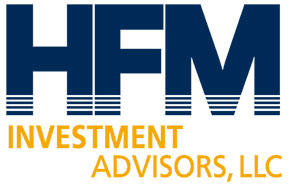
Cash Balance Plan: Could You Save Even More?
If you are a New Jersey business owner looking to maximize tax deductions and accelerated retirement savings, you might consider a cash balance plan!
Cash balance plans provide a unique way to save for retirement that combines features of both traditional defined benefit plans and 401(k) plans. A cash balance plan can help you and your key employees save upwards of $200,000 per year for retirement! If you are looking for larger tax deductions and accelerated retirement savings, a Cash Balance Plan may be a perfect solution for you.
Cash Balance Plans at a Glance
Key Benefits Include:
- Tax advantages
- Accelerated retirement savings
- Attraction + retention of top talent
- Flexibility + portability
Considerations:
- Annual funding is required
- Owners, or targeted key employees, must make at least $200,000 annually
- Plan must be set up with the intention of being permanent (minimum 3-5 year commitment)
What is a Cash Balance Plan?
Technically, a cash balance plan is classified as a defined benefit plan, which means it is subject to minimum funding requirements. Likewise, the investment of cash balance plan assets is managed by the employer or an investment manager appointed by the employer. Since cash balance plans are a “benefit,” increases and decreases in the value of the actual plan’s investments do not directly affect the amount promised to employees.
For example, if Jane is promised through a cash balance plan a $10,000 account value, then she is entitled to a $10,000 payment, whereas the actual value of Jane’s account could be $8,000. The employer is responsible for making Jane’s account whole. Or, vice versa, her account could be worth $12,000, yet she is only eligible to claim the $10,000 that is her accrued benefit.*
Typically, however, an employee benefit is expressed as a hypothetical account balance, giving it a defined contribution “feel.” A participant’s account is credited each year with a “pay credit,” usually a percentage of pay, and also with an “interest credit,” either a fixed or variable rate that is tied to an index. When a participant is eligible to receive benefits under a cash balance plan, the plan is treated as if it were a defined contribution plan with distributions available at the termination of employment in the form of an annuity or a lump sum that can be rolled over into an IRA.
Who Are Cash Balance Plans Best Suited For?
Cash balance plans are especially suited for self-employed or small business owners with high incomes, since these plans allow high-earning business owners to save more than the maximum contribution limit for profit sharing/401(k) plans. Cash balance plans have generous contribution limits – upwards of $200,000 in annual wage deferral.
These plans allow for large annual tax deductions because the limitation is on the annual distribution that the plan participant may receive at retirement, not on the annual contribution to the plan as is the case with profit sharing or 401(k) plans. Employer contributions to a cash balance plan could potentially be three to four times their profit sharing/401(k) contributions and will vary depending on age, income, employee payroll and how much is currently invested in the plan.
Most cash balance plans are designed for the primary benefit of owners or executives of a company. Some candidates include professional practices (doctors, lawyers, accountants, architects, agencies, family-owned businesses, etc.) who would like to minimize taxes by putting away their hard-earned dollars into tax-deferred accounts. Additionally, cash balance plans can be appropriate when the owner or executive-level employees are several years older than most of the non-highly compensated employees. For more specifics, schedule time with us to discuss plan design options.
How Much Can Actually Be Saved in a Cash Balance Plan?
Below is a hypothetical illustration of what it could look like when a cash balance plan is combined with 401(k) Savings and profit sharing.*
| Age | 401(k) Deferral | Profit Sharing | Cash Balance | Annual Total |
| 40 | $22,500 | $19,800 | $114,000 | $156,300 |
| 45 | $22,500 | $19,800 | $146,000 | $188,300 |
| 50 | $30,000 | $19,800 | $188,000 | $237,800 |
| 55 | $30,000 | $19,800 | $241,000 | $290,800 |
| 60 | $30,000 | $19,800 | $309,000 | $358,800 |
| 65 | $30,000 | $19,800 | $321,000 | $370,800 |
This Sounds Too Good to Be True, So What’s The Catch?
Downsides to sponsoring a cash balance plan include the need to commit to annual minimum funding levels over a period of 3-5 years, annual administration fees, investment management fees, and actuarial fees associated with the annual certification requirement showing that the plan is properly funded. Typically, the tax savings are advantageous and outweigh many of the disadvantages.
Should I Be Concerned About Cash Flow Fluctuations?
Businesses that may not want to make the commitment to a cash balance plan or that are not good candidates for it, but would nonetheless like to optimize retirement benefits for executive and other highly compensated employees, may want to consider a profit-sharing plan with an allocation method known as “new comparability” or “cross-testing.”
With the new comparability plan, profit sharing contributions are allocated using the time value of money as a basis to allocate larger contributions to participants closer to retirement age. Depending on the demographic makeup of a company’s workforce, the new comparability allocation method can be an effective means of targeting contributions to certain senior highly compensated employees without committing to funding a defined benefit plan.
What Should I Do Next?
Plan design is largely dependent on the demographics of a business as well as the level of contributions with which the business is most comfortable. For these reasons, consulting with a third-party administrator is highly recommended. This third-party administrator will create customized illustrations using your company’s particular demographics to provide alternative plan designs for review and consideration.
Proper retirement plan design can help you fulfill your company’s retirement plan objectives, such as maximizing benefits to key employees, tax deferral, and efficient ways to minimize costs to the company.
*This example is a hypothetical illustration. It is not representative of any specific situation and your results will vary.

HFM Investment Advisors, LLC.
856-232-2270
401kteam@hfmadvisors.com
102 West High Street Suite 200, Glassboro, NJ 08028
Follow us: LinkedIn | Facebook
Investment advisory services are offered through HFM Investment Advisors, LLC, a registered investment adviser. Please remember that securities cannot be purchased, sold or traded via e-mail or voice message system. This email transmission and any documents, files, or previous email messages attached to it may contain information that is confidential or legally privileged. If you are not the intended recipient, you are hereby notified that you must not read this transmission and that any disclosure, copying, printing, distribution, or any action or omission of this transmission is strictly prohibited. If you have received this transmission in error, please immediately notify the sender by telephone at 856-232-2270 or return and delete the original transmission and its attachments without reading or saving in any manner.
This information was developed as a general guide to educate plan sponsors and is not intended as authoritative guidance or tax/legal advice. Each plan has unique requirements, and you should consult your attorney or tax advisor for guidance on your specific situation.
©401(k) Marketing, LLC. All rights reserved. Proprietary and confidential. Do not copy or distribute outside original intent.
